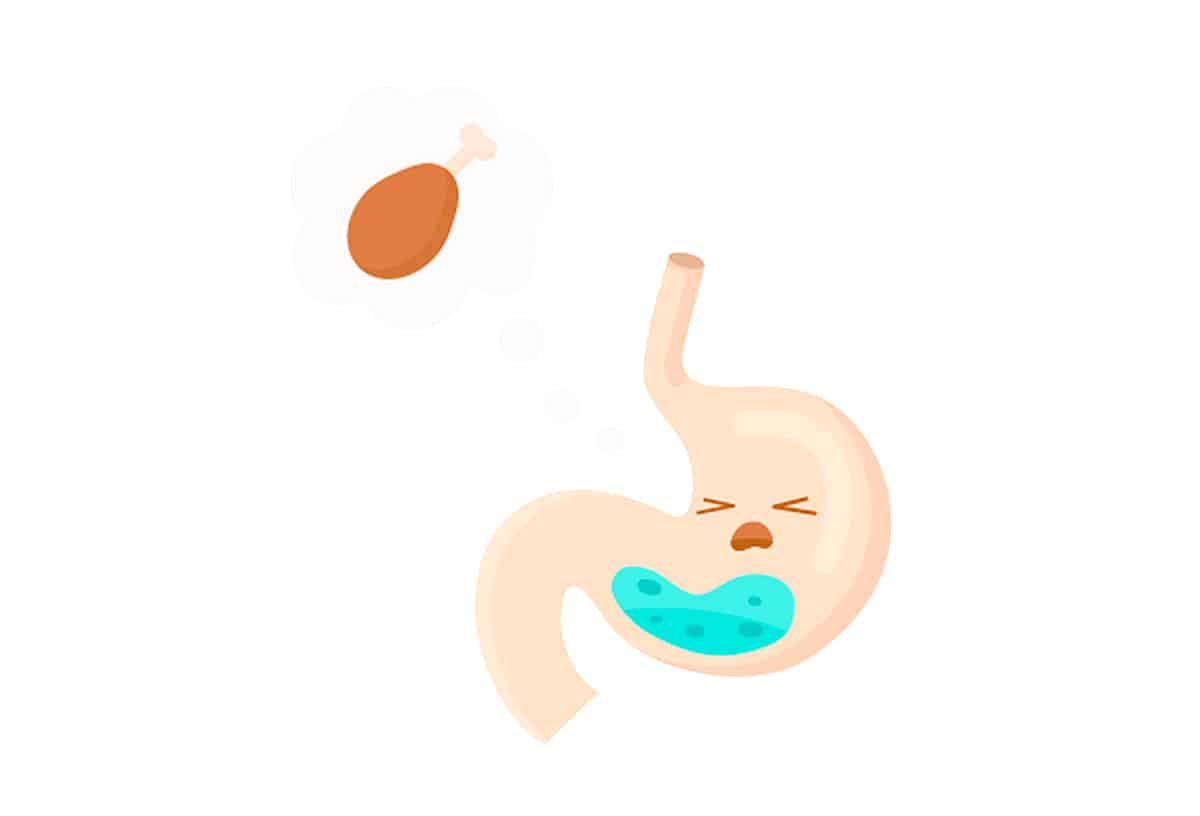
“Eat when you’re hungry” is classic advice for a reason. Your body is a much more finely-tuned instrument than a calorie-tracking app. If you know how to listen, it gives you ultra-detailed real-time feedback based exactly on your specific metabolism and activity. All the step counters and heart rate monitors in the world can only dream of reaching that level of precision about your calorie needs.
Several studies have found that training people to eat when they’re hungry helps them lose weight, and more importantly they stick to it much better than calorie-counting or restrictive diets. (No diet will produce lasting weight loss if you can’t endure it for longer than a month!). It also improves blood sugar control, even without manipulating carb levels at all.
“Eat when you’re hungry” seems so basic and obvious, but it’s actually harder than it sounds. For one thing, a lot of modern food is intentionally designed to confuse and suppress hunger signaling. (The solution to this, of course, is to stop eating that food and eat a diet that helps you naturally regulate appetite.)
But even if your food choices are perfect, modern eating schedules and habits encourage us to get out of touch with hunger-based eating:
- Habit: Most people eat by the clock, not by their stomach. It’s lunchtime or dinnertime, and so we eat whether we’re hungry or not - or alternately, it’s not mealtime yet, so we ignore our hunger and don’t eat until some arbitrary clock time. Most of us have been trained to eat this way since we were kids.
- Deliberately ignoring hunger: When most people try to lose weight, they pick a set number of calories and divide it into meals, and then deliberately try to ignore their hunger in between - more training to ignore hunger signals and eat according to external cues instead.
- Emotional Eating: Food is the first place many people turn for comfort or entertainment, regardless of physical hunger.
After a lifetime of that, a lot of people need some help in re-learning how to eat based on physical hunger and not external cues. So here are 4 practical, research-based strategies to help you get back in touch with physical hunger.
1. Blood Glucose Monitoring
There are a lot of objective physiological signs of hunger. Most of them are tricky to measure at home, but there’s one that’s fairly simple to monitor: blood glucose (aka blood sugar). You can buy a blood glucose meter at any drugstore, and they’re very easy to use.
As this study explains, in healthy people, a drop in blood glucose is associated with physical hunger. Fasting blood glucose is typically lower than blood glucose right after eating. Based on that, the researchers trained their subjects to:
- Test their blood glucose when they felt the desire to eat.
- If their blood glucose was low (presence of actual physical hunger), go ahead and eat. Otherwise, wait and do something else.
- Notice how they felt physically when their blood glucose was low.
And it worked! Subjects improved their insulin sensitivity and learned to sense their physical need for food as distinct from habit or cravings. The study diet wasn’t designed to cause weight loss, but the results also note that subjects in the intervention group lost about 5 pounds during the 7 weeks.
If you want to try this yourself, one more study might be worth noting. There are reference ranges for “normal” and “low” blood glucose, but this study found that the best way to determine “low” was for each person to take his or her fasting blood glucose (blood glucose measurement in the morning before eating). That way, it’s more personalized and specific to you.
2. Hunger Tracking/Mindfulness
A less invasive strategy than blood glucose monitoring is mindfulness training - this is especially valuable if your problem is emotional eating. This study defines mindfulness as:
“a quality of consciousness that is characterized by continually attending to one’s moment-by-moment experiences, thoughts, and emotions with an open, non-judgmental approach”
and points out that mindfulness-based interventions have had great results for emotional eating, binge eating, and similar problems.

In mindfulness-based eating interventions, participants are taught to pay attention to how their bodies feel when they want to eat - is there a physical sensation of hunger (emptiness or hollowness in the stomach, physical weakness) or is the problem really loneliness, boredom, habit, stress, or something else? The goal is to eat in response to moderate hunger, not wait until the hunger becomes extreme. This can take some practice, and a lot of the programs also include general “body scan” meditations where attention is directed to each body part in turn, as practice for being aware of physical sensations.
In Practice: Track Hunger, Not Food
Being “mindful” and “paying attention” are still pretty fuzzy concepts (what is “mindfulness” and how do you know when you’ve achieved it?), so here’s a concrete strategy: track hunger at meals the same way some people track calories.
This study looked at mindfulness-based intervention for binge eating and stressed that participants had to track how hungry they felt at meals, not what food they ate. It’s just a specific way to start if “being mindful” sounds hopelessly vague. This page from a hunger training booklet is actually from one of the blood glucose studies above, but might be very helpful in developing mindfulness about hunger even if you just ignore the blood glucose bit.
3. Changes to Routine
If your problem isn’t so much emotional eating as habitual eating (“it’s lunchtime, so I’m going to eat, I guess.”), try eating in an unusual way, or under different circumstances.
This study looked at people mindlessly eating popcorn in movie theaters, a behavior typically governed by habit more than hunger. In their habitual setting, people ate so mindlessly that they chomped through stale popcorn just as happily as fresh. They weren’t even paying enough attention to taste their food, let alone recognize how hungry they were for it! But there was an easy way to disrupt that: change the environment.
Just making the participants use their non-dominant hand broke the cycle of automatic eating. Having them eat popcorn in a different location also did the trick. Try…
- Eating somewhere you normally don’t.
- Eating with your non-dominant hand.
- If you can identify a time when you eat by habit, make the food inconvenient. For example, if you habitually eat a snack with your afternoon coffee regardless of hunger, put the snack in a different place. This will hopefully trigger a thought process like “Why aren’t the snacks in the drawer - oh right, because I was trying to notice my hunger. Am I actually hungry?”
4. Stress Management
A final tip: good stress management can make it much easier to eat to hunger but not beyond.

Stress makes it much harder to eat according to your natural hunger cues. Several different studies (like this one and this one) have found that stress tends to drive people to eat more, even when they’re not physically hungry. Stress is a factor in night-eating syndrome and elevated levels of the stress hormone cortisol have been reported in patients with binge-eating disorder.
Mindful eating might help you distinguish between stress and physical hunger, but you know what’s more pleasant than recognizing and white-knuckling stress cravings? Not having them in the first place. Some good stress management strategies include nature exposure, meditation, yoga, breathing exercises, exercise, and proper nutrition.
Summing it Up
Blood glucose can give you an objective idea of how hungry your body is, and using mindfulness strategies like hunger tracking can also help distinguish between hunger and other drivers to eat (loneliness, boredom, etc.) If you’re a habit-eater, changing even small things about meals can have a big impact, and stress management makes it much easier to stick with a hunger-based eating plan.
Of course, knowing that your “hunger” is actually loneliness doesn’t make the desire to eat go away. That part is up to you. But recognizing true hunger as a distinct sensation is the first step.





Leave a Reply